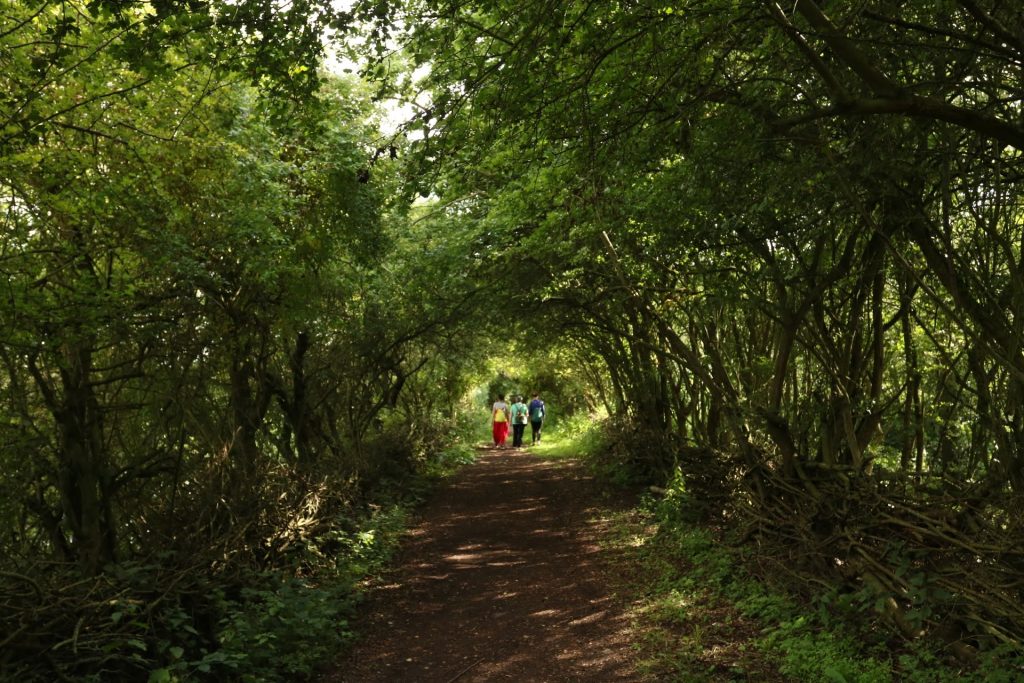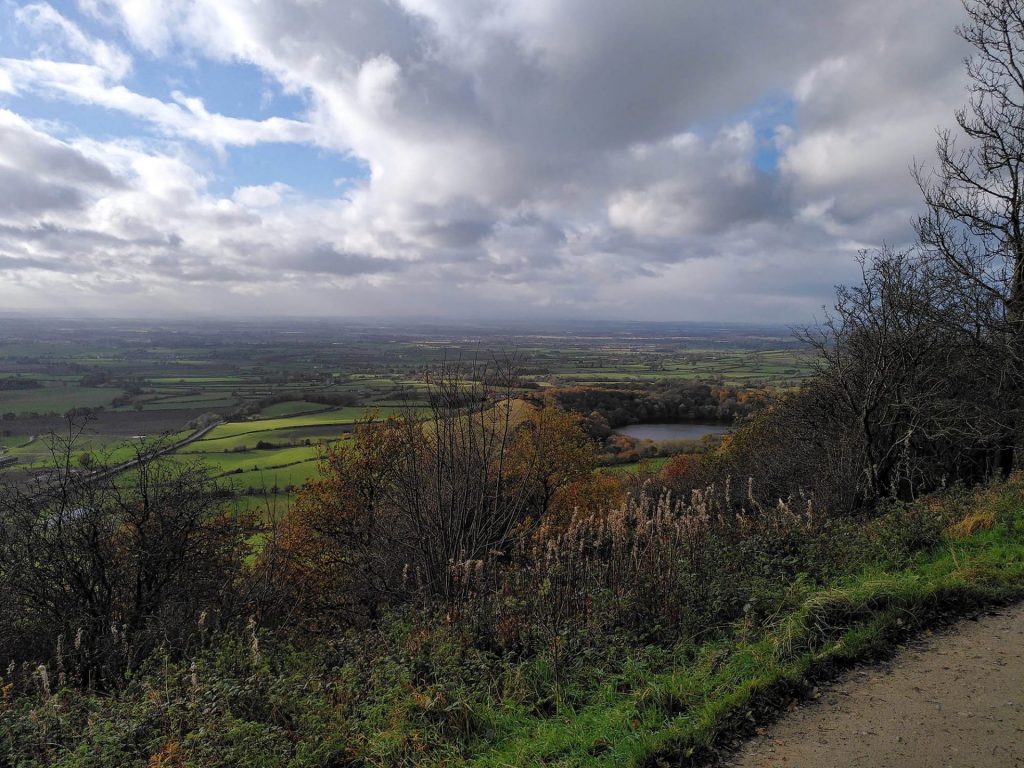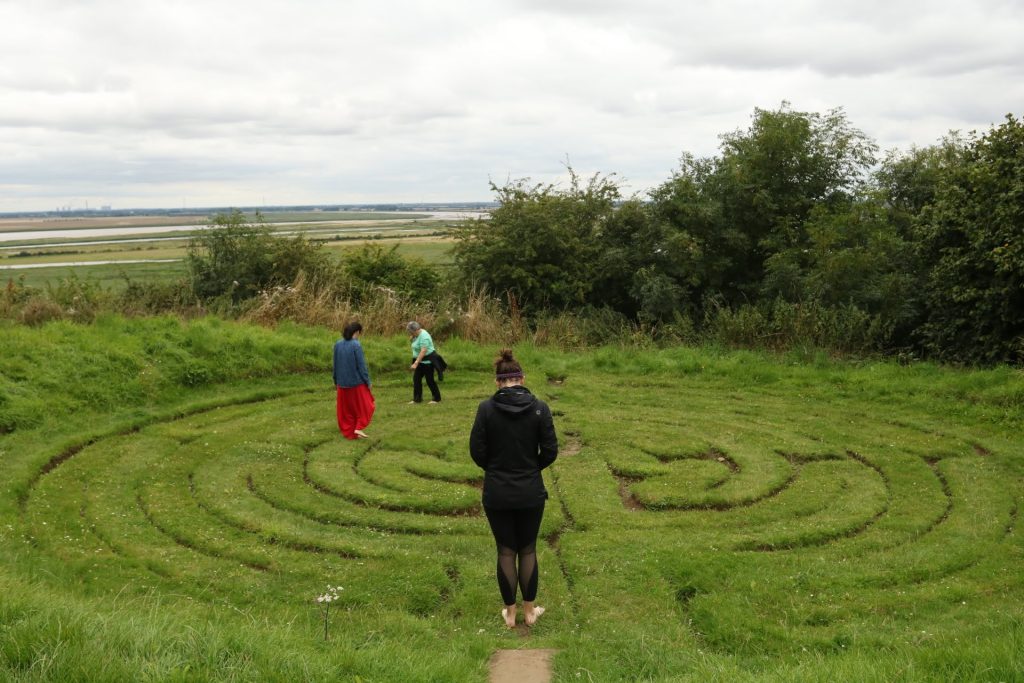Going Cyclical

Sometimes, and maybe more often than we like to admit, the personal can impact the professional. When it comes to Doing Business Differently, beyond what we’ve covered in the series so far, I wanted to explore these overlaps in more detail. An uncomfortable personal life lesson for me has spilled over to a more cyclical way of operating as a business.
The seed of the idea
The idea emerged from the distillation of lessons I was forced to learn in 2022 from a missed miscarriage/pregnancy loss and the physical and emotional fall out of this experience. By the Autumn of that year I was exhausted and I finally paid some attention to what my body was trying to tell me.
As the nights got longer I tried ‘wintering’ for the first time. ‘Wintering’ is a term renewed in popularity by Katherine May’s book of the same title (affiliate link). May describes it as; “a season in the cold. It is a fallow period in life when you’re cut off from the world, feeling rejected, sidelined, blocked from progress, or cast into the role of an outsider.” As a conditioned hater of early dark nights, stepping intentionally towards this season rather than deny or avoid it was a very new approach.
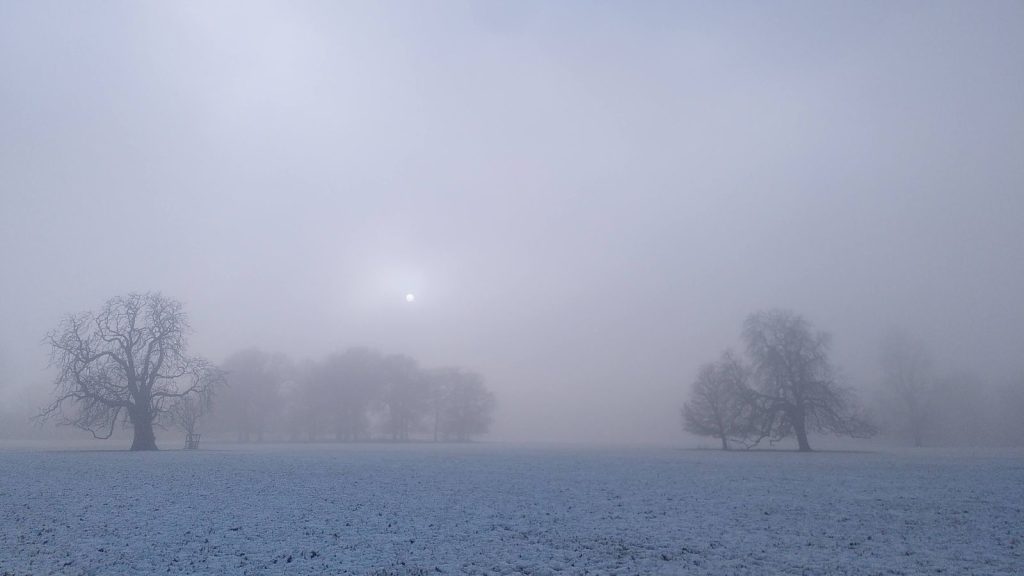
I am used to always finding January depressing, even going so far as to book holidays to sunnier and warmer climes to avoid peak darkness.
May puts it in some perspective: “Plants and animals don’t fight the winter; they don’t pretend it’s not happening and attempt to carry on living the same lives that they lived in the summer. They prepare. They adapt. They perform extraordinary acts of metamorphosis to get them through. Winter is a time of withdrawing from the world, maximising scant resources, carrying out acts of brutal efficiency and vanishing from sight; but that’s where the transformation occurs. Winter is not the death of the life cycle, but its crucible.”
So this time I prepared. I lined up the literature I wanted to read to understand what my body had just been through. I actively journalled more, I took on less work, and slept in. I took myself on retreat spending 7 days moving through Joanna Macy’s Work That Reconnects, cut myself off from technology, urban sprawl, caffeine, outside people and even time. Our days were led by the bell. Through Macy’s framework and the recent pregnancy loss I was able to access grief that I had held at bay for years. As January arrived, I dusted down the slow cooker and the seed sprouter and explored different dried goods hiding at the back of the cupboard. I sprouted mung beans, microgreens and cooked wholesome, nourishing food and it fed my soul as well.
Slowly slowly, I noticed each day get that little bit longer. I reached the end of January 2023 with much more energy, more willingness to collaborate, and more faith in my abilities. May offers another relevant pearl of wisdom, “We have seasons when we flourish and seasons when the leaves fall from us, revealing our bare bones. Given time, they grow again.”
This quietly profound experience of working with the season rather than against it in my personal life spilled over into asking the same of my business and society.
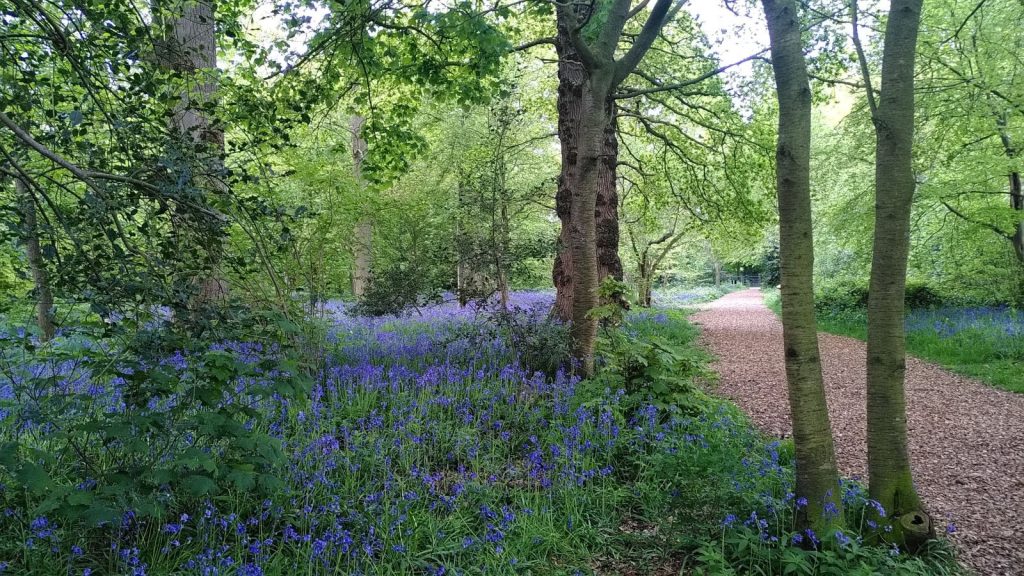
The burnout I had been experiencing was not just my issue. If you ask around, it’s everywhere. We wear “exhausted” and “busy” like a badge of honour until we keel over when we’ve pushed ourselves too far. And this also applies to people who love their job and get plenty of autonomy over their day. This is burnout that is a symptom of the system that we’re in. A man-made, unnatural system.
Making space to feel sad is rare too in a world that forces people to mask hard emotions and project positivity regardless. Again, May has wisdom to add here: “If happiness is a skill, then sadness is, too. Perhaps through all those years at school, or perhaps through other terrors, we are taught to ignore sadness, to stuff it down into our satchels and pretend it isn’t there. As adults, we often have to learn to hear the clarity of its call. That is wintering. It is the active acceptance of sadness. It is the practice of allowing ourselves to feel it as a need. It is the courage to stare down the worst parts of our experience and to commit to healing them the best we can. Wintering is a moment of intuition, our true needs felt keenly as a knife.”
It is not possible to be productive and happy all the time nor be more productive and more happy than you were yesterday, last week or last year. Nothing living on this planet continues in a straight line in a single upward trajectory. Nothing except the very man-made optimistic sales forecasts and society’s obsession with ‘onwards and upwards’. There’s even an emoji dedicated to it: 📈
And whilst I’d been trying to move away from that idea of growth for the sake of growth, something Kate Raworth terms being ‘growth-agnostic’, it suddenly dawned on me that there was a blindingly obvious alternative.
Everything natural on this planet is cyclical. So why not be that instead?

Noticing the annual cycle
As I am personally relearning to appreciate the longer evenings and the cold (not least because they are the trade off for the beautifully long nights in Summer), and since we’re based far enough north in the Northern Hemisphere, how can we apply that at With Many Roots as well?
There are of course well-known cycles in business. Financial accounting runs on a 12 month cycle and there are usually quarterly reports to share with shareholders on business performance. These are usually in the form of numbers and more lines on graphs and they are seasonal whether explicitly said or not. I was curious to explore this a little further:
- What else is important to take into account each season? How can we take stock as a team?
- What if we acknowledge how the seasons impact us individually and collectively?
- What if we recognise how seasonal shifts impact our outward-facing work? When are our fallow times? When are our harvest times?
- What if we mark key moments in the year to ground us in time and place?
- What if we take the opportunity for ritual in the team?
- What if we work synchronistically with the seasons and take cues from nature?

How we’re going to apply this at With Many Roots
Very simple to start with. Daphne, our organisational doula, will be facilitating quarterly gatherings with the team around the equinoxes and the solstices. We’re calling them Seasonal Gatherings.
We’ll be switching out looking at Profit & Loss reports for sharing how we’ve spotted the seasons shifting in our localities as we dial in from different parts of the country and world. We’ll also reflect if and how the changing light is impacting our energy, our drive and our focus. And we’ll touch on any patterns we notice as a business. We will do this for one full cycle, a full year and then come back, sift through the data and learnings. After that, the intention is to build in activities that align with the seasons we’re in.
So watch this space.
But there’s one other cycle that I had been paying much closer attention to since the pregnancy loss. One that affects more than half the population: the menstrual cycle. How could we incorporate that into the business as well?
The monthly cycle
There is so much good work being done tackling the taboo around periods. But most of the time, that’s the only part of the cycle that we talk about: the days leading up to and including the bleed. What about the rest of it?
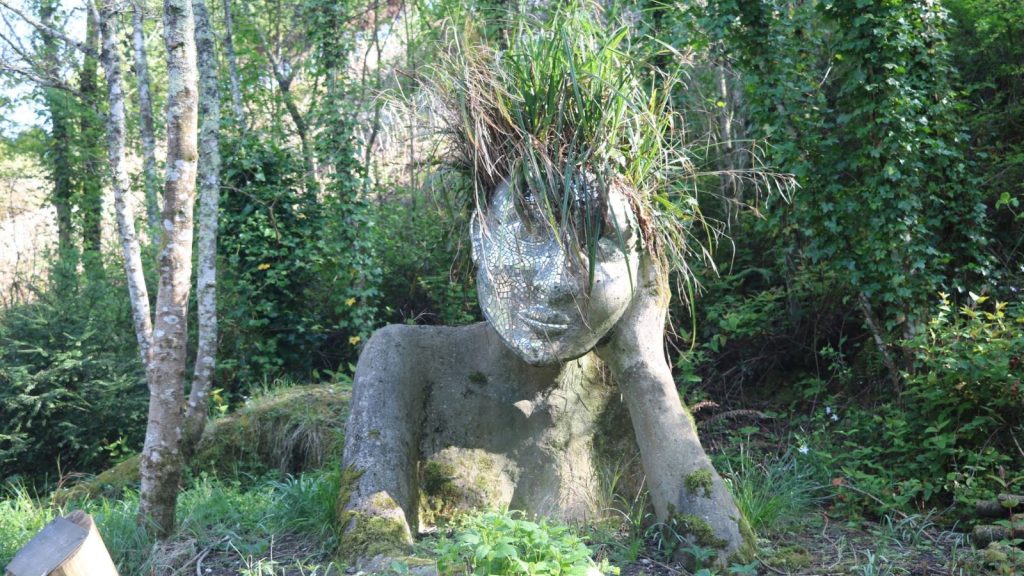
India Rakusen’s BBC podcast, 28ish Days Later – with a short episode for everyday of the statistically average cycle – woke me up to what is going on inside the bodies of menstruators. Across the series she shares insights around the whole cycle and how that affects our feelings, behaviours, skills. Rakusen synthesises the ebb and flow during the cycle in a catchy way: there’s the Beyonce hormone (oestrogen) and its twin hormone, progesterone.
It means if you are menstruating or ‘cycling’ as I now like to call it, you have a different clock or rhythm. And yet our world is singularly obsessed with the 24 hour cycle also known as the circadian rhythm. The expectation is we should smash every day, just like the last. The circadian rhythm applies to men, children and often older women who have been through menopause. But a huge chunk of the population is also on this longer 28-ish days rhythm.
Maisie Hill, author of Period Power (affiliate link) invites us to consider whether we have ever wondered why one week we can excel in our fitness class, complete our to do list, placate an argument, and yet the next week barely want to get out of bed, let alone interact with the outside world?
Alexandra Pope and Sjanie Hugo Wurlitzer have dug into this rhythm in Wild Power (affiliate link) and have developed a framework to think about the cycle as “inner seasons” from ovulation to menstruation, as the two hormones rise and fall approximately every 28 days for the average cycle. These phases are named and linked to our annual seasons, Winter, Spring, Summer and Autumn. Each season has their challenges as well as their super powers. They suggest that there are lessons to be learned each season and I found this to be a really radical idea that bleeding days might not be totally terrible and maybe I don’t have to spend the whole time wishing it was over.
It got me thinking how we might apply this as a business.
- What if rather than avoiding or denying the premenstrual angst- we hosted 121s on those days aka autumn: no sugar coating, saying it like it is and with the agency to ask for what we need?
- What if we align our brainstorming sessions when some of us are in our springs when oestrogen is on the rise?
- What if we book sales calls around my summer (ovulation) when I know I’ll have more confidence?
- What if we didn’t travel in our winters (menstruating), or if we have to, we bake in extra days around it for more recuperation?
Disclaimer
Of course, not everyone has a cycle and hormonal contraception usually means ovulation doesn’t occur so there’s no rise and fall of oestrogen and progesterone. And there are others who don’t have regular cycles, or have a great deal of discomfort with their cycle.
The notion of leaning into our cycles as a team, if we do have them, is not to be exclusive but to shine a light on a hidden aspect of our daily lives.
How we’re going to apply this at With Many Roots
We’re going to start with noticing and awareness. Given the rise in conversation around periods, it makes sense that we start with our ‘winters’: a day or so before bleeding until the end of each period. It correlates with a growing number of work period policies to be more mindful of our colleagues and consider deadlines and work priorities.
We all work flexibly at WMR so we don’t have ‘menstrual leave’ as such but what we’re doing is sharing our winters on the shared calendar so we can all discreetly know where each of us is when we’re communicating, collaborating and planning work. We have made it clear that there’s no need to ‘man up’ or ‘power through’ this season. As a team we can make provisions so we can rest more during those days.

We’ll start to normalise where we are in our cycles in conversations as well. During our check-ins on our weekly team calls we might note what day we’re in in our cycle and how that might be impacting how we’re feeling and how we’re showing up to the meeting. Or when we find ourselves on a particular high or particularly frustrated with something, we might also consider where we are in our cycle and if that might be having any impact.
I’m wary of minimising the work challenges that do come up with the stereotypical tropes of ‘oh it’s just down to hormones’ or ‘she’s premenstrual’. What I found provoking in Maisie Hill’s exploration is that our hormones might be exacerbating an existing issue and that a particular part of the cycle means we feel more compelled to voice it. Perhaps our hormones might be enabling us to be more vocal, steadfast, pointing out unfairness? Maybe they’re working with us and not against us? This feels like a really radical idea to take on, especially as a team.
We intend to report back on this process and see what unfurls.
For now, that’s it. We’re going to notice our inner seasons and cycles.


